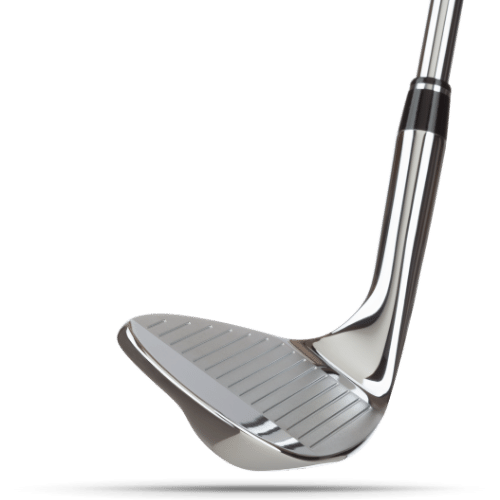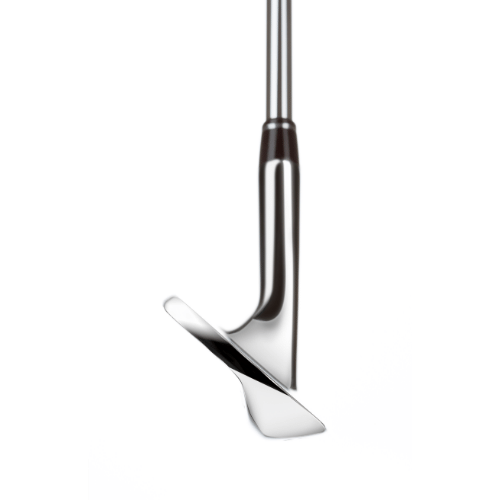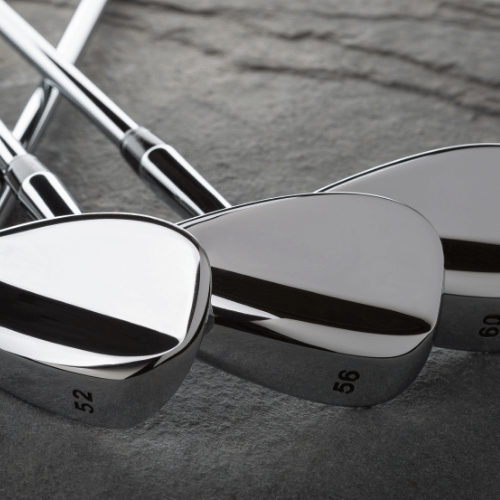If you’ve ever wondered what sets professional golfers apart from amateurs when it comes to using golf wedges, you’re not alone. Is there some hidden secret that can help you master these important clubs and elevate your game?
While there may not be a magic trick or secret technique, there are certainly strategies and insights that can greatly improve your wedge play. We will uncover the secrets that can transform your approach shots and make your short game a threat on the golf course.
So, if you’re ready to discover the keys to different golf wedges and unlocking your full potential, then keep reading. You won’t want to miss out on these game-changing insights that are sure to take your golf game with these golf clubs to a whole new level.
Key Takeaways: For Different Golf Wedges
- Mastering golf wedges is essential for elevating overall golf performance.
- Understanding wedge types and wedge lofts (pitching, lob, sand, gap) and their loft degrees is crucial for effective shot selection.
- Amateur golfers often use two wedge setup (pitching and sand wedges) for versatility, while professionals opt for three or four wedges setup for more options.
- Using illegal wedges can lead to penalties and disqualification in golf tournaments, understanding the importance of adhering to regulations.
- Techniques for dialling in distances involve experimenting with loft degrees and considering the impact of bounce on shot control.
Types of Golf Wedges
Golf wedges come in four main types: pitching, lob, sand, and gap wedges.
When choosing the rights wedges for your golf bag, it’s important to consider the loft degree. Pitching wedges, one of the four types, have a loft degree in the range of 47-53 and minimal bounce.
Sand wedges, on the other hand, have a loft degree of 54-58 and usually have more degrees of bounce, specifically designed for navigating sand traps.
Gap wedges bridge the gap between sand and pitching wedges, with loft between 50 and 56 degrees.
Lastly, lob wedges have 60-64 degrees of loft and are used for high shots near the green.
When looking at sand wedge features, it’s crucial to find the right loft degree for your needs and a design that helps you effectively navigate sand traps.
Gap Wedge Vs. Approach Wedge
The gap wedge and approach wedge are the two types of golf wedges commonly used in the game. Both wedges have different loft degrees that affect the trajectory of the ball. Here is a comparison of the two:
- Gap wedge: This wedge has a loft degree between 50 and 54 and is used to bridge the gap between sand and pitching wedges. The ball trajectory with a gap wedge is lower compared to other wedges.
- Approach wedge: Also known as a gap wedge, this wedge has a similar loft degree range of 50 to 54. It’s used for approach shots to the green. The golf ball trajectory with an approach wedge is also lower.
GOLF WEDGE DEGREE AND DISTANCE CHART
https://stix.golf/en-gb/blogs/rough-thoughts/ultimate-guide-to-golf-wedge-degrees
Type of Wedge Wedge Degree Club Distance (Avg.) Pitching Wedge 45° 100-135 yards Gap Wedge 52° 90-120 yards Sand Wedge 56° 80-100 yards Lob Wedge 60° 60-90 yards Different golf wedges and their distances
When choosing between the gap wedge and approach wedge in your iron set, consider the desired golf ball trajectory. Both wedges can be effective tools in your golf game, helping you master different shots and improve your overall performance.
Wedge Setups Used by Professionals
Professional golfers strategically select their wedge setups to improve their game. These setups allow them to accurately control their shots and achieve the desired distances. The choice of wedges is based on their playing style and the specific shots they need to make on the course.
Typically, professionals use a three wedge setup. These setups include a pitching wedge with a loft degree of around 46 degrees, a gap wedge with a loft degree of approximately 52 degrees, and a lob wedge with a loft degree of around 58 degrees. This setup covers a wider range of distances and shot types.
For long hitters four-wedge setups are used. These setups provide even more options and precision for various distances and shot scenarios.
Illegal Wedges in Golf

Illegal wedges in golf can have serious consequences, including penalties and disqualification from competitions. It’s important to understand the potential ramifications of using illegal wedges and how to identify them.
Here are some key points to keep in mind:
Consequences of using illegal wedges:
- Penalties: If you’re caught using an illegal wedge during a competition, you may face penalties that can negatively impact your score and overall performance.
- Disqualification: In more severe cases, the use of illegal wedges can result in disqualification from the tournament, leading to the loss of prizes and future opportunities.
How to identify illegal wedges:
- Check the Official Club Database: The R&A and USGA maintain a database of wedges that don’t conform to the rules. Before using your wedges in professional competitions, make sure they’re listed as conforming in this database.
- Seek Expert Advice: Consult with experienced golf professionals or instructors who can help you determine if your wedges meet the regulations set by the governing bodies of golf.
Finding Top-Quality Premium Golf Wedges
When it comes to finding high-quality golf wedges, it’s important to consider the potential consequences of using illegal ones. Instead, opt for top-quality premium golf wedges that can greatly enhance your game. One great option is to invest in custom wedges, which offer numerous benefits.
Custom wedges are specifically designed to fit your unique swing and playing style, resulting in improved accuracy and control on the course. Not only that, custom wedges often feature superior materials and craftsmanship, leading to better performance and increased durability.
When choosing the right bounce for your wedges, it’s crucial to take into account the playing conditions you typically encounter. For soft turf or fluffy sand, a higher bounce is ideal as it helps prevent the club from digging too much. On the other hand, if you often play on firm turf or hard sand, a lower bounce is preferable as it allows for cleaner contact with the ball.
Loft Degrees and Trajectory

Understanding the relationship between loft degrees and trajectory is important for mastering your golf wedges. The loft degree of a wedge determines how high or low the ball will travel when you hit it.
Different wedge types have different loft degrees. For example, pitching wedges typically have a loft degree in the range of 47-53, while lob wedges have a loft degree of 60-64.
Bounce is also important. Bounce refers to the angle between the leading edge of the wedge and the ground. It helps prevent the club from digging into the turf, especially in soft conditions.
To achieve consistent distances with your wedges, you can try the clockface drill. Imagine the target as 12 o’clock and use different swing lengths to correspond to different distances.
Learn all about the art of wielding the 60-degree wedge and discover the strategic insights that will elevate your golf performance. Whether you’re a seasoned pro or a novice on the greens, this guide provides invaluable tips on when and how to unleash the power of the 60-degree wedge. Elevate your golfing experience and sharpen your skills by delving into the secrets behind this essential club. Click here to read more: When To Use A 60 Degree Wedge
Importance of Bounce in Wedges
Bounce is an important factor in the performance and versatility of golf wedges. It refers to the angle between the leading edge and the trailing edge of the wedge’s sole. The right amount of bounce can have a significant impact on your shots, especially in different playing conditions.
Course Conditions: Bounce helps prevent the club from digging into soft turf or sand, making it ideal for courses with lush fairways or bunkers with fluffy sand.
Swing Style: Steeper swings benefit from more bounce, while shallower swings require less bounce to avoid hitting thin shots.
Loft: Higher lofted wedges typically have more bounce, providing more forgiveness on shots around the green.
Considering these factors when choosing the bounce for your wedges can improve your performance on the golf course.
Techniques for Dialling in Distances
Now that you understand how important bounce is in wedges, let’s explore some techniques for accurately dialing in distances on the golf course. Mastering these techniques will improve your wedge shot accuracy and consistency.
Here are some key techniques to consider:
- Experiment with different loft degrees on your wedges to find the best fit for your game. Lob wedges with higher loft degrees can give you more height and spin on your shots. On the other hand, pitching wedges with lower loft degrees will give you a lower trajectory. Finding the right combination of loft degrees in your wedge set will help you effectively dial in distances.
- Remember that the bounce of your wedge plays a crucial role in controlling your shots. A higher bounce can help you smoothly glide through the turf, while a lower bounce can help you gain better control by digging into the turf. Understanding how different bounce angles affect your shots will allow you to make adjustments based on the course conditions.
FAQ For All The Different Golf Wedges
Q: What is wedge grind on a golf wedge?
A: Wedge grind refers to the shaping or altering of the sole of a wedge to suit different turf conditions and playing styles.
Q: What is the purpose of a lob wedge?
A: A lob wedge has a higher loft, typically around 60 degrees, and is designed for high, soft-landing shots around the green or over obstacles.
Q: How important are the grooves on a golf wedge?
A: The grooves on a golf wedge are essential for enhancing spin and control on shots, especially on shorter approach shots and around the green.
Conclusion
Mastering golf wedges requires understanding the different types of wedges, finding the right setup, and using techniques to dial in distances. By doing so, you can improve your golf game significantly.
When it comes to high-quality golf wedges, Titleist Vokey is a top choice. Their wedges are crafted with advanced technology and precision, allowing you to elevate your shots with accuracy.
Get ready to become a wedge master and see your golf game soar to new heights.

